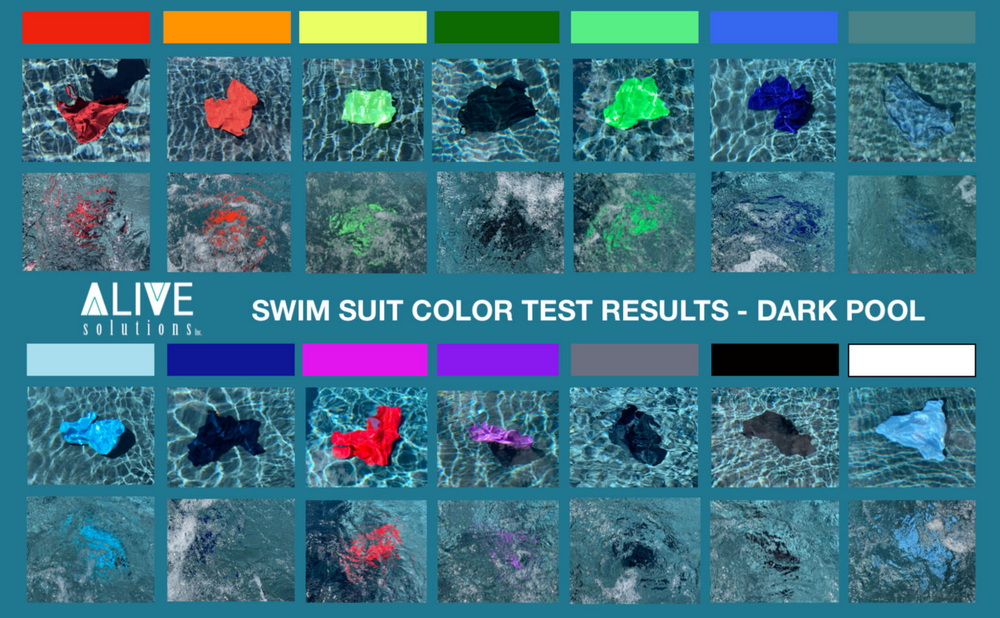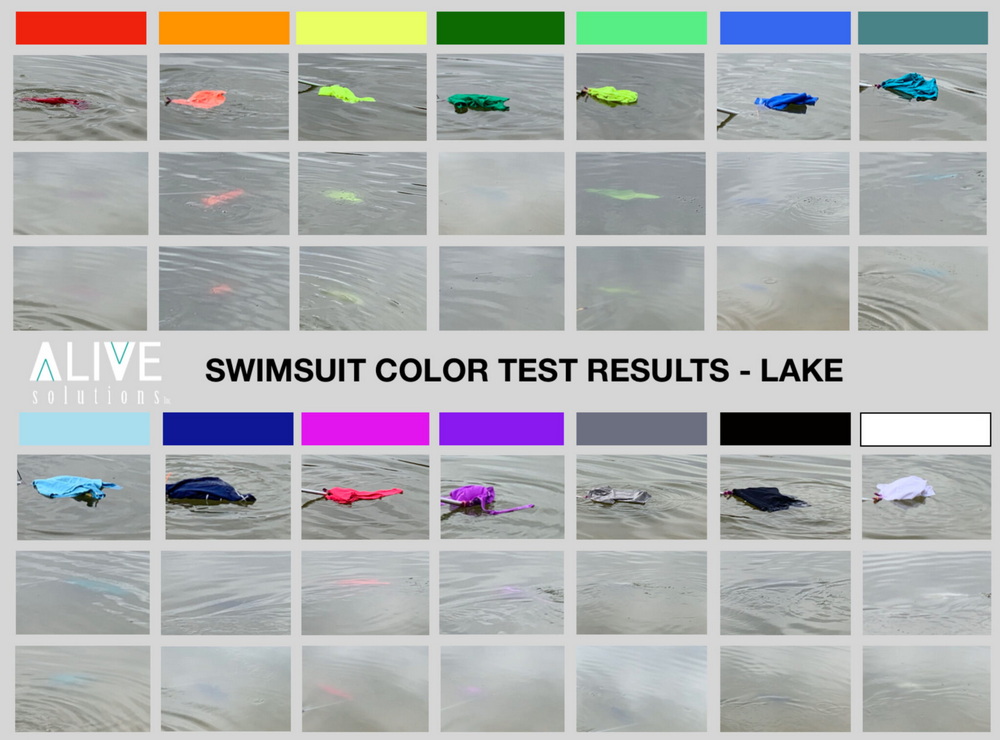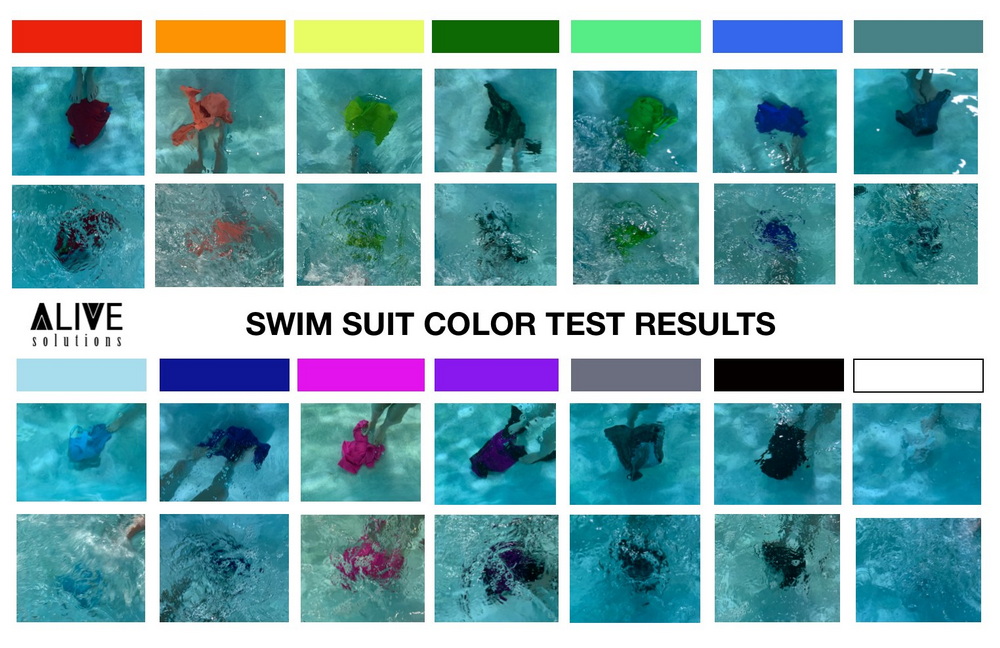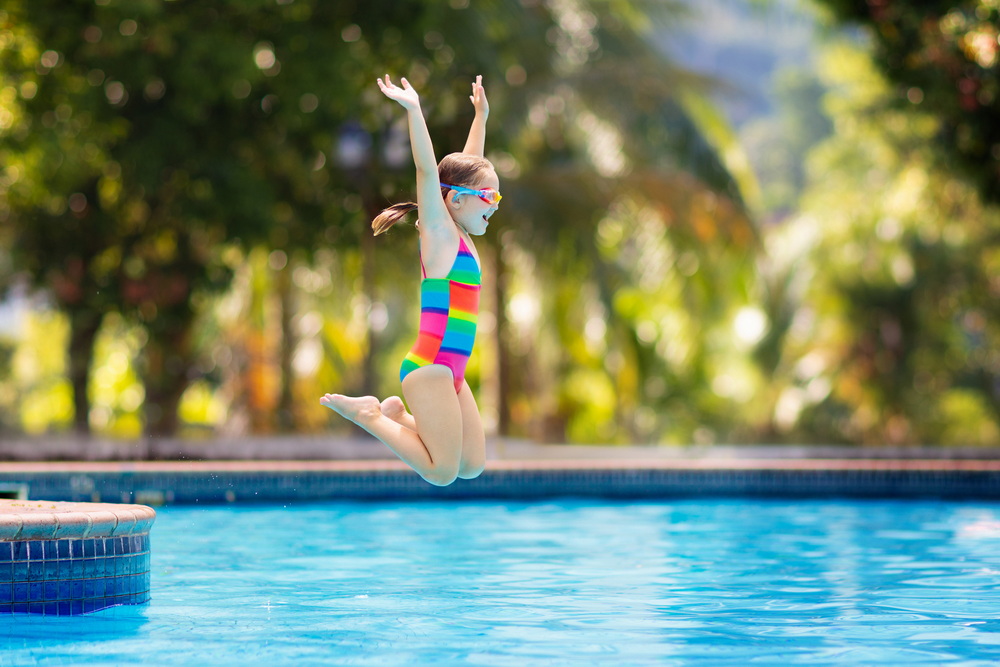Content Menu
● The Science of Color Visibility in Water
● Research Findings on Swimsuit Color Safety
● Safest Colors for Swimming Pools
● Safest Colors for Open Water
● Colors to Avoid
● The Importance of Contrast
● Beyond Color: Other Factors Affecting Swimwear Safety
● Implementing Color Safety in Practice
● The Role of Swimsuit Color in Overall Water Safety
● Conclusion
When it comes to enjoying time in the water, whether at the beach, lake, or pool, safety should always be the top priority. While many factors contribute to water safety, one often overlooked aspect is the color of swimwear. Recent research and expert opinions have shed light on how the color of a swimsuit can play a crucial role in enhancing visibility and potentially saving lives. In this comprehensive guide, we'll explore the science behind swimsuit colors, their impact on water safety, and provide recommendations for choosing the safest options for you and your loved ones.
The Science of Color Visibility in Water
To understand why certain swimsuit colors are safer than others, we need to delve into the science of color visibility in aquatic environments. Water absorbs and scatters light differently than air, which affects how colors appear when submerged. The depth, clarity, and type of water (such as chlorinated pools, lakes, or oceans) all influence how visible a particular color will be.
Light penetration in water decreases as depth increases, with different wavelengths of light being absorbed at varying rates. Red light is absorbed quickly, followed by orange, yellow, green, and blue. This is why objects appear to change color as they descend deeper into water. Understanding this principle is crucial when selecting swimwear colors for optimal visibility.

Research Findings on Swimsuit Color Safety
Several studies have been conducted to determine which swimsuit colors provide the best visibility in different aquatic environments. These research efforts have yielded valuable insights that can guide our choices for safer swimwear.
One notable study involved testing various swimsuit colors in both pool and open water settings. The researchers submerged different colored swimsuits and observed their visibility from above the water surface. The results were eye-opening and provided clear evidence that some colors are significantly more visible than others.

Safest Colors for Swimming Pools
In swimming pools, which typically have clear, chlorinated water, certain colors stood out as the safest options:
1. Neon Pink: This vibrant, fluorescent color proved to be highly visible in pool water. Its bright, attention-grabbing hue makes it easy to spot, even in deeper areas of the pool.
2. Neon Orange: Similar to neon pink, neon orange offers excellent visibility in pool settings. Its bright, warm tone contrasts well against the blue background of most pools.
3. Neon Yellow: Another fluorescent option, neon yellow, provides high visibility in pool water. Its intense brightness helps it stand out clearly.
4. Neon Green: While not as visible as the top three choices, neon green still offers good visibility in pool environments.
It's worth noting that these neon colors are not only highly visible in clear pool water but also tend to maintain their visibility even as the water depth increases.
Safest Colors for Open Water
When it comes to open water environments such as lakes, rivers, and oceans, the visibility of swimsuit colors can differ due to varying water conditions. However, some colors consistently performed well in these settings:
1. Neon Orange: This color emerged as a top performer in open water visibility tests. Its bright, warm tone contrasts effectively against the often darker or murkier waters found in natural settings.
2. Neon Yellow: Another excellent choice for open water, neon yellow provides high visibility across various conditions.
3. Neon Green: While not as visible as orange or yellow, neon green still offers good visibility in open water environments.
4. White: Surprisingly, white performed well in some open water tests, especially in darker or murkier conditions. However, its effectiveness can vary depending on water clarity and lighting conditions.

Colors to Avoid
Just as important as knowing which colors are safest is understanding which ones to avoid. The research identified several colors that performed poorly in visibility tests:
1. Dark Blue: This color tends to blend in with the water, making it difficult to spot, especially in deeper areas or under low light conditions.
2. Black: Similar to dark blue, black swimsuits can be challenging to see in water, particularly in open water environments.
3. Dark Green: In natural settings like lakes or oceans, dark green can easily blend with the surroundings, reducing visibility.
4. Gray: This neutral color lacks contrast against most water backgrounds, making it a poor choice for safety.
5. Light Blue: While it might seem counterintuitive, light blue can actually disappear in pool water, making it a potentially dangerous choice.
The Importance of Contrast
One key takeaway from the research is the importance of contrast. The safest swimsuit colors are those that provide a stark contrast against the water and surrounding environment. This is why neon colors perform so well – they stand out dramatically against the typical blue or green hues of water.
In addition to color, patterns can also play a role in enhancing visibility. Swimsuits with high-contrast patterns, such as black and white stripes or bold geometric designs, can increase visibility by breaking up the silhouette and creating visual interest.

Beyond Color: Other Factors Affecting Swimwear Safety
While color is an important consideration, it's not the only factor that contributes to swimwear safety. Here are some additional aspects to keep in mind when choosing safe swimwear:
1. Fit: A properly fitting swimsuit is crucial for safety. Loose or baggy swimwear can impede movement in the water and potentially become a hazard.
2. Material: Opt for swimsuits made from durable, quick-drying materials that won't become heavy or cumbersome when wet.
3. UV Protection: Choose swimwear with built-in UV protection to safeguard against harmful sun rays, especially for extended periods in the water.
4. Visibility Accessories: Consider adding high-visibility accessories such as brightly colored swim caps, arm bands, or float devices to further enhance visibility.
5. Reflective Elements: Some swimwear incorporates reflective materials or designs, which can be particularly useful in low-light conditions or for early morning or evening swims.
Implementing Color Safety in Practice
Now that we understand the importance of swimsuit color in water safety, how can we put this knowledge into practice? Here are some practical tips for implementing color safety:
1. Prioritize Neon Colors: When shopping for swimwear, especially for children, prioritize neon pink, orange, yellow, and green options.
2. Consider the Environment: Think about where you'll be swimming most often and choose colors accordingly. For example, if you frequently visit the beach, opt for colors that perform well in open water.
3. Layer for Safety: If you already own swimsuits in less visible colors, consider layering with a brightly colored rash guard or swim shirt to enhance visibility.
4. Group Coordination: For group activities or swim lessons, consider coordinating swimsuit colors to make it easier for instructors or lifeguards to keep track of participants.
5. Educate Others: Share information about swimsuit color safety with friends, family, and community members to raise awareness and promote safer practices.
6. Regular Replacement: Keep in mind that colors can fade over time due to exposure to chlorine, salt water, and sun. Replace swimwear regularly to maintain optimal visibility.
The Role of Swimsuit Color in Overall Water Safety
While choosing a highly visible swimsuit color is an important safety measure, it's crucial to remember that it's just one part of a comprehensive approach to water safety. Other essential practices include:
1. Supervision: Constant, attentive adult supervision is the most critical factor in preventing water accidents, especially for children.
2. Swimming Lessons: Ensuring that all family members know how to swim is fundamental to water safety.
3. Life Jackets: In open water or for inexperienced swimmers, properly fitted life jackets are essential.
4. Water Safety Rules: Establish and enforce clear rules around water activities, such as no running near the pool or no swimming alone.
5. Emergency Preparedness: Learn CPR and basic water rescue techniques, and always have a phone nearby in case of emergencies.
6. Environmental Awareness: Be aware of water conditions, including depth, currents, and potential hazards, before entering any body of water.
Conclusion
The color of a swimsuit may seem like a minor detail, but research has shown that it can play a significant role in water safety. By choosing highly visible colors such as neon pink, orange, yellow, and green, we can enhance the chances of quick detection in case of an emergency. This is particularly crucial for children, who may be more vulnerable in aquatic environments.
However, it's important to remember that swimsuit color is just one element of a comprehensive water safety strategy. It should be combined with proper supervision, swimming skills, use of appropriate safety equipment, and adherence to water safety rules.
As we enjoy our time in and around water, let's make informed choices about swimwear colors and spread awareness about this often-overlooked aspect of water safety. By doing so, we can contribute to creating safer aquatic experiences for ourselves, our loved ones, and our communities.
Whether you're lounging by the pool, surfing ocean waves, or enjoying a serene lake, remember that the right swimsuit color can make a difference. So next time you're shopping for swimwear, consider not just style and comfort, but also visibility and safety. After all, when it comes to water activities, being seen could be the factor that saves a life.



































































